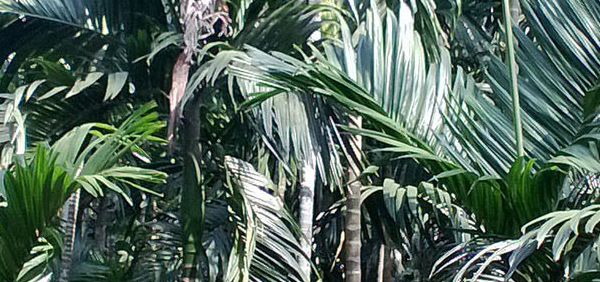sadaphal :

Taxonomical Classification
Kingdom: Plantae - Plants
Division: Magnoliophyta - Flowering plants
Class: Magnoliopsida - Dicotyledons
Family: Rubiaceae
Genus: Mussaenda
Species: Mussaenda frondosa
Allied species:
VERNACULAR NAMES
Sanskrit: Sreeparna, Rajatari, Sreepatri, Sreemati श्रीवाटी shrivatiEnglish: Dhobi Tree, flag bush, white flag, white lady, white rag plant, wild mussaenda
Hindi: बेदिना bedina
Telugu: nagavalli
Bengali: নাগবল্লী nagaballi
Marathi: भूतकेश bhutakesha, सरवड sarvad
Konkani: सरवडी sarvadi
Tamil: வெள்ளிமடந்தை velli-matantai
Malayalam: വെള്ളില vellila
Kannada: ಬೆಲ್ಲೊಟ್ಟಿ bellotti
Assamese: sona-rupa
Varities:
- Mussaenda frondosa var. angustifolia Kuntze
- Mussaenda frondosa var. frondosa
- Mussaenda frondosa var. latifolia Kuntze
Synonyms
Synonyms in Ayurveda: Sreeparna, Rajatari, Sreepatri, SreematiLatin Mussaenda, from the Singhalese vernacular name for Mussaenda frondosa; Latin glabra, not covered with hair, possibly referring to the stem of this climber
This tropical plant belongs to the Rubiaceae family, and was used to cure jaundice, ulcers, leprosy, asthma, hyperacidity, fever, cough, and as a diuretic.
Cultivation:
Propogation:
Harvesting:
Phytochemistry:
The flowers contain anthocyanins, hyperin, quercetin, rutin, ferulic and sinapic acids; beta-sitosterol glucoside.Parts used for medicinal purpose
Whole plant, ,Geographical distribution:
General Use:
The whole plant of wild Mussaenda is used for cough, bronchitis, fever, wounds, ulcers, leucoderma, pruritis, jaundice and anti-inflammatory activity. Leaves make excellent herbal shampoo it is used in traditional medicine as anti-diarrhoeal, diuretic, and in lithiasis. It is valued for cough, as a vermifuge for children, in the treatment of headache, and in arsenic poisoning. The herb is also used in malaria and skin diseases and snake bitesTherapeutic Uses:
Flower—diuretic, antiasthmatic, antiperiodic. Leaves and flowers—used in external applications for ulcers. Root—used in the treatment of white leprosy. White petiolate bract—prescribed in jaundice.Systemic Use:
CONCLUSION:
Photos of sadaphal -
- sadaphal : Mussaenda frondosa Linn.
KEY WORDS: sadaphal Mussaenda frondosa Linn.
- » Classification and names of sadaphal
- » Synonyms and definitions of sadaphal
- » Drug Properties of sadaphal
- » Chemical Constituents of sadaphal
- » Standardization of sadaphal
- » Parts used and Dosage of sadaphal
- » Morphology and Histology of sadaphal
- » Distribution and Conservation of sadaphal
- » Cultivation of sadaphal
- » sadaphal in the market
- » Medicinal Uses of sadaphal
- » Researches and clinical trails of sadaphal
- » sadaphal in other sytems of medicine
- » Ayurvedic formulations with sadaphal
- » Images of sadaphal















